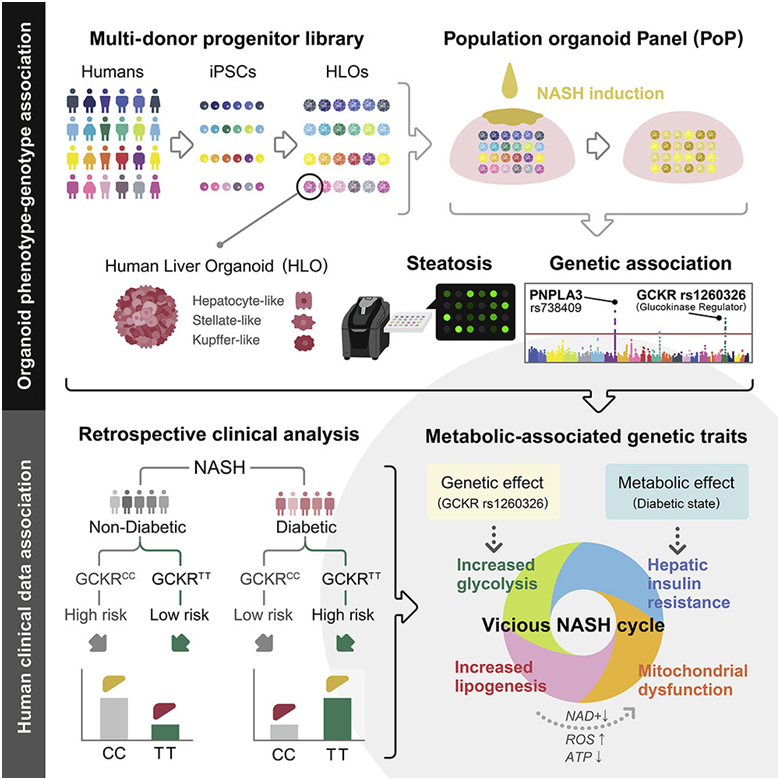预约演示
更新于:2025-05-07
VIPR1
更新于:2025-05-07
基本信息
别名 HVR1、PACAP type II receptor、PACAP-R-2 + [11] |
简介 G protein-coupled receptor activated by the neuropeptides vasoactive intestinal peptide (VIP) and pituitary adenylate cyclase-activating polypeptide (ADCYAP1/PACAP) (PubMed:35477937, PubMed:36385145, PubMed:8179610). Binds VIP and both PACAP27 and PACAP38 bioactive peptides with the following order of ligand affinity VIP = PACAP27 > PACAP38 (PubMed:35477937, PubMed:8179610). Ligand binding causes a conformation change that triggers signaling via guanine nucleotide-binding proteins (G proteins) and modulates the activity of downstream effectors. Activates cAMP-dependent pathway (PubMed:35477937, PubMed:36385145, PubMed:8179610). |
关联
4
项与 VIPR1 相关的药物作用机制 VIPR1激动剂 [+1] |
最高研发阶段批准上市 |
首次获批国家/地区 格鲁吉亚 |
首次获批日期2021-07-27 |
作用机制 VIPR1激动剂 [+2] |
在研适应症 |
非在研适应症- |
最高研发阶段批准上市 |
首次获批国家/地区 丹麦 |
首次获批日期1998-01-01 |
作用机制 VIPR1拮抗剂 [+1] |
在研机构 |
原研机构 |
非在研适应症- |
最高研发阶段临床前 |
首次获批国家/地区- |
首次获批日期1800-01-20 |
18
项与 VIPR1 相关的临床试验ACTRN12624001417572
Effectiveness of a Very early Intensive Enrichment Program (VIP) on Infant Development and Parent Wellbeing in Cerebral Palsy: Pragmatic Randomized Controlled Trial
开始日期2025-03-03 |
申办/合作机构 |
CTRI/2024/10/075314
A multi-centric, open-label, comparative, randomized, phase 3 trial to evaluate the efficacy and safety of Aviptadil as an add-on treatment to the Standard of Care in acute respiratory distress syndrome. - NIL
开始日期2024-10-26 |
申办/合作机构 |
ISRCTN77251669
An open label, pilot study to determine the effect of in-centre and at-home administration intra-cavernosal injections of Invicorp on male Erectile Dysfunction (ED) post radical prostatectomy
开始日期2022-08-22 |
申办/合作机构- |
100 项与 VIPR1 相关的临床结果
登录后查看更多信息
100 项与 VIPR1 相关的转化医学
登录后查看更多信息
0 项与 VIPR1 相关的专利(医药)
登录后查看更多信息
1,009
项与 VIPR1 相关的文献(医药)2025-05-01·Advances in Therapy
Targeting PACAP: Beyond Migraine to Cluster, Menstrual, and Post-traumatic Headaches
Review
作者: Do, Thien Phu ; Guo, Song ; Xiao, Zheman ; Pellesi, Lanfranco ; Chalmer, Mona Ameri ; Martelletti, Paolo
2025-02-01·Alzheimer's & Dementia
Integrating rare pathogenic variant prioritization with gene‐based association analysis to identify novel genes and relevant multimodal traits for Alzheimer's disease
Article
作者: Lo, Chun‐Yi Zac ; Zhang, Zi‐Chao ; Cao, Jixin ; Chen, Feng ; Zhao, Xing‐Ming ; Cheng, Tian‐Lin ; Luo, Xiaohui ; Ding, Jing ; Zhang, Cheng ; Guo, Qihao ; Chen, Jingqi
2025-01-01·Poultry Science
miR-317 regulates the proliferation and apoptosis of duck follicle granulosa cells by targeting VIPR1
Article
作者: Liang, Azheng ; Miao, Zhongwei ; Liu, Changtao ; Zhu, Zhiming ; Huang, Qinlou ; Zhou, Zhengkui ; Li, Li ; Cai, Qiannan ; Zheng, Nenzhu ; Shi, Wenli ; Xin, Qingwu ; Zhang, Linli ; Zhao, Bangzhe ; Liu, Xiaopan
5
项与 VIPR1 相关的新闻(医药)2024-09-05
·生物探索
引言
慢性丙型肝炎(Chronic Hepatitis C)是由丙肝病毒(Hepatitis C Virus, HCV)引起的一种肝脏炎症。全球约有5000万慢性丙肝病毒感染者,每年约新增100万感染病例。据世界卫生组织估计,2022年约有242,000人死于由丙型肝炎引发的肝硬化和肝癌等并发症。尽管目前已有针对丙肝的特效药物,如索磷布韦、达拉他韦等,但药物价格昂贵,且治愈患者仍有再次感染病毒的风险。因此,推动预防性HCV疫苗的发展具有重大的现实意义。
HCV是一种包膜的单链正链RNA病毒,属于黄病毒科丙型肝炎病毒属。其全长RNA约有9500个碱基对,编码一个超过3000个氨基酸的多聚蛋白前体。该前体在宿主细胞和病毒自身蛋白酶的作用下,裂解成多种独立的病毒蛋白。其中,表面糖蛋白E1和E2位于病毒包膜上,是高度糖基化的蛋白,也是病毒颗粒表面唯一的蛋白质组分。E1和E2以异源二聚体的形式存在于病毒颗粒包膜表面,对病毒侵入细胞至关重要,是现有丙肝病毒中和抗体的主要靶点,也是潜在疫苗开发的主要目标,因此其结构研究受到了广泛关注。然而,E1/E2复合物高度糖基化且结构极不稳定,使得结构解析极具挑战性。
此前,最完整的E1/E2结构研究是在2022年10月发表在Science杂志上的E1/E2与三种单克隆抗体形成的复合物【1】。该研究揭示了E1/E2的异二聚化界面、蛋白表面糖基化修饰以及抗体结合表位等关键结构信息,但复合物的跨膜结构域由于过于动态而未能解析。此外,HCV病毒颗粒表面的E1/E2蛋白被认为会形成更高阶的复合物组装形式。尽管其他包膜病毒如HIV、新冠病毒、流感病毒的表面刺突蛋白常形成三聚体结构,但HCV的E1/E2是否形成高阶聚体一直未得到结构信息的验证【2】。
2024年9月4日,哥本哈根大学免疫学和微生物学系(ISIM)的Jannick Prentø和哥本哈根大学生物医学科学学院的Pontus Gourdon和中国科学院植物研究所王开拓合作在Nature杂志上发表了The hepatitis C virus envelope protein complex is a homodimer of heterodimers。这项工作解析了首个丙肝病毒HCV表面糖蛋白E1/E2的高阶复合物冷冻电镜结构。研究结果表明,体外纯化的HCV E1/E2形成了二聚体组装形式,而非其他包膜病毒常见的三聚体结构。这一发现颠覆了先前的认知,对设计有效的HCV疫苗具有重要的指导意义。
技术上,由病毒学家和结构生物学家组成的联合研究团队在多年的合作研究中进行了多项技术创新,最终取得了这一成果。E1和E2蛋白的N末端和C末端对蛋白结构和功能至关重要,因此无法使用传统标签方法进行纯化。在先前的Science文章研究中,研究者采用带有Strep标签的单克隆抗体与蛋白复合物共表达,以抗原-抗体复合物的形式纯化整个蛋白复合物。而在本研究中,研究者将Strep标签设计在E2蛋白中间的一个柔性loop区,并进行了功能验证,使得单独纯化蛋白复合物成为可能。此外,由于蛋白复合物表达量极低且在体外体系中极不稳定,研究者克服了蛋白纯化和冷冻制样过程中的多项技术难题。在每次大规模纯化中仅能得到小于10微克样品的情况下,研究者成功对蛋白进行了结构解析。
针对蛋白样品的柔性,研究者们采用了多种新的冷冻电镜结构解析技术、密度加强及模型搭建算法。特别是在Alphafold【3】结构预测和基于深度学习的三维密度图后处理算法EMReady【4】的帮助下,研究者构建了几乎所有氨基酸序列的结构模型,覆盖了E1序列的96%和E2序列的90%。相比之下,Science文章中的结构模型仅包括51%的E1和82%的E2序列。
文章中最重要的发现是E1/E2异聚体能进一步组装成更高阶的二聚体复合物。这种二聚化是由E2蛋白介导的,相互作用面积约为1200平方埃,主要基于位于蛋白表面的多个氨基酸间的疏水或氢键相互作用,而蛋白表面的糖基基本不参与二聚化。二聚化使得此区域被包裹在复合体内部,而其他暴露区域表面多数都是高度糖基化的,这可能解释了HCV E1/E2糖蛋白复合物的低免疫原性。作者在此基础上开展了一系列的蛋白突变体生化和免疫实验,证明了二聚体界面中的氨基酸序列非常保守,对其突变会影响二聚体的稳定性。此外,先前的研究结果也显示,位于二聚化界面上至少一半的氨基酸残基在所有亚型HCV中都完全保守,且其突变会影响HCV假病毒颗粒(HCV pseudoparticle,或者HCVpp)对细胞的侵染活性【5】。
图二:HCV E1/E2蛋白复合物的冷冻电镜结构(Credit: Nature)
此次解析的结构还揭示了多种此前研究中未被观察到的结构细节。首先,复合物的跨膜螺旋区结构首次得到解析,复合物结构中的跨膜蛋白束排列较松散,平均分辨率约5埃,但结合Alphafold结构预测,研究者仍能搭建来自两个蛋白的总共6个跨膜螺旋模型。其中,M1-M2来自E1蛋白的PCR (putative fusion peptide containing region)区域,M1和M2螺旋中间的链接区域(272-281位氨基酸)非常保守,被认为是介导病毒颗粒与侵染细胞融合的肽段(putative fusion peptide,简称pFP);M3-M4来自E1蛋白的C端,M3前面还发现了一个可能平行于膜所在平面的螺旋,命名为MX螺旋;M5-M6位于E2蛋白的C端。
图三:HCV E1/E2复合物中跨膜结构域的位置和结构(Credit: Nature)
其次,结构中首次解析了E2蛋白N末端的区域,包括序列最多样化的hypervariable region 1 (HVR1)以及序列保守但结构非常不稳定的antigenic site 412 (AS412)。这些区域被认为对HCV的免疫逃逸至关重要,但其具体作用机制和结构尚不完全清楚。结构分析发现,HVR1区域可以隐藏多种HCV中和抗体的识别表位以及受体CD81的结合表位,而体外实验也证明,样品与多种中和抗体和受体CD81的结合能力在4摄氏度时较低,在温度升高时会升高,这暗示了此部分结构在病毒侵染和被免疫系统识别时需要进行一定程度的重排。
图四:E2蛋白N末端HCV1和AS412区域的结构及其对蛋白结合能力的影响(Credit: Nature)
参考文献
1. Torrents de la Peña A, Sliepen K, Eshun-Wilson L, et al. Structure of the hepatitis C virus E1E2 glycoprotein complex. Science. 2022;378(6617):263-269.
2. Freedman H, Logan MR, Hockman D, Koehler Leman J, Law JLM, Houghton M. Computational Prediction of the Heterodimeric and Higher-Order Structure of gpE1/gpE2 Envelope Glycoproteins Encoded by Hepatitis C Virus. J Virol. 2017;91(8):e02309-16.
3. Jumper J, Evans R, Pritzel A, et al. Highly accurate protein structure prediction with AlphaFold. Nature. 2021;596(7873):583-589.
4. He J, Li T, Huang SY. Improvement of cryo-EM maps by simultaneous local and non-local deep learning. Nat Commun. 2023;14(1):3217.
5. Pfaff-Kilgore JM, Davidson E, Kadash-Edmondson K, et al. Sites of vulnerability in HCV E1E2 identified by comprehensive functional screening. Cell Rep. 2022;39(8):110859.
https://www-nature-com.libproxy1.nus.edu.sg/articles/s41586-024-07783-5
责编|探索君
排版|探索君
文章来源|“BioArt”
End
往期精选
围观
一文读透细胞死亡(Cell Death) | 24年Cell重磅综述(长文收藏版)
热文
Cell | 是什么决定了细胞的大小?
热文
Nature | 2024年值得关注的七项技术
热文
Nature | 自身免疫性疾病能被治愈吗?科学家们终于看到了希望
热文
CRISPR技术进化史 | 24年Cell综述
疫苗临床1期临床终止
2023-05-31
点击上方的 行舟Drug ▲ 添加关注一单体Porter等对血清IgG抗体的研究证明:Ig分子的基本结构是由四肽链组成的。即:由二条相同的分子量较小的肽链(轻链)和二条相同的分子量较大的肽链(重链)组成。轻链与重链是由二硫键连接形成一个四肽链分子称为Ig分子的单体;单体是构成所有免疫球蛋白分子的基本结构;所有抗体的单体都是四条肽链的对称结构,即:两条糖基化重链(H)和两条非糖基化轻链(L);每条重链和轻链分为氨基端(N端)和羧基端(C端)。二轻链和重链1、轻链(light chain,L链)由214个氨基酸残基组成,通常不含碳水化合物,分子量为24kD,有两个由链内二硫键组成的环肽,L链可分为:Kappa(κ)与 lambda(λ)2个亚型。2、重链(heavy chain,H链)由450-550个氨基酸残基组成,分子量55-75kD,含糖数量不同,4-5个链内二硫键,可分为5类,μ、γ、α、δ、ε链,不同的H链与L链(κ或λ)组成完整的Ig分子。分别称为:IgM,IgG,IgA,IgD和IgE。三可变区和恒定区通过对H链或L链的氨基酸序列比较分析,发现:其N-末端序列变化很大,称此区为可变区(V区);C-末端氨基酸则相对稳定,变化很小,称此区为恒定区(C区)。1、可变区(Variable region,V区)L链N端1/2处(VL)108-111个氨基酸残基,H链N端1/5-1/4处(VH)118个氨基酸残基,V区有一个肽环65-75个氨基酸残基。可变区可分为高变区(hypervariable region,HVR)和骨架区(framework region,FR),VL的HVR在24-34,50-56,89-97氨基酸位置。VH的HVR在31-35,50-56,95-102氨基酸位置。分别称为VL和VH的HVR1,HVR2,HVR3。高变区为抗体与抗原的结合位置,称为决定簇互补区(complementarity-determining region,CDR),VL和VH的HVR1,HVR2,HVR3又分别称为CDR1,CDR2,CDR3,其中CDR3具有更高的高变程度,H链在与抗原结合中起重要的作用。2、恒定区(constant region,C区)L链C端1/2处,105个氨基酸残基,H链C端3/4-4/5处,331-431个氨基酸残基。在同一种属动物中是比较恒定的,是制备第二抗体进行标记的重要基础。四功能区链内二硫键折叠成球形区称为功能区(domain)约由110个氨基酸组成。氨基酸的顺序具有高度的同源性。1、L链功能区:2个,(VL,CL各一个)2、H链功能区:IgG,IgA,IgD,4个(V区1个,C区3个),IgM,IgE,5个(V区1个,C区4个)3、功能区的β片层结构:抗体的L链和H链中V区或C区每个功能区的二级结构是反向平行的β片层结构。4、功能区的作用:(1)VL和VH是抗原结合的部位。(2)CL和CH1上具有同种异型的遗传标记。(3)IgG的CH2和IgM的CH3具有补体C1q结合位点;IgG借助CH2部分可通过胎盘(4)CH3或CH4具有结合单核细胞、巨噬细胞、粒细胞、B细胞、NK细胞Fc段受体的功能,不同的抗体可与不同的细胞结合,产生不同的免疫效应。五铰链区(1)铰链区不是一个独立的功能区,位于CH1与CH2之间;包括H链间二硫键,该区富含脯氨酸,不形成α-螺旋。(2)当Ab与Ag结合时,铰链区发生扭曲,使Ab的2个抗原结合点更好地与2个抗原决定簇互补。(3)由于CH2和CH3构型变化,显示出活化补体、结合组织细胞等生物学活性。(4)含有木瓜蛋白酶、胃蛋白酶的水解位点。六酶解片段1.木瓜蛋白酶的水解片段1959年 Porter用木瓜蛋白酶(papain)水解兔IgG分子,将IgG从绞链区二硫键的近N端侧切断,从而将免疫球蛋白裂解为三个片段,即2个相同的Fab段和1个Fc段。每一个Fab段即抗原结合片段(fragment antigen binding,Fab),含有一条完整的L链和H链近N 端侧的1/2。每个Fab段结合抗原是单价的,即只能结合一个抗原决定簇。因此不能连结成较大的抗原抗体复合物,不出现凝集或沉淀现象。Fab中的约1/2 H链部分称为Fd段,约含225个氨基酸残基,包括VH、CH1和部分绞链区。Fc段在低温或低离子强度下可形成结晶,故称为可结晶片段(fragment crystallizable,Fc),Fc段含有两条H链羧基端(C端)的一半,包含CH2和CH3两个功能区,它无抗体活性。Ig在异种间免疫所具有的抗原性主要存在于Fc段,同时Fc段还具有活化补体、亲细胞、通过胎盘和介导与细菌蛋白结合等生物学活性。2、胃蛋白酶水解片段1960年Nisonoff等最早用胃蛋白酶水解兔IgG分子,可将IgG从绞链区重链间二硫键近C端切断,将其裂解为大小不等的两个片段。大片段为1个Fab双体,以F(ab')2表示。F(ab')2由一对L链和一对略大于Fd的H链(称为Fd')组成。Fd'约含有235个氨基酸残基,包括VH、CH1和绞链区。F(ab')2结合抗原为双价,可结合两个抗原决定簇,其结合抗原的亲合力要大于单价的Fab,与抗原结合后可出现凝集或沉淀现象。由于F(ab')2保持了结合相应抗原的生物学活性,又减少或避免了Fc段抗原性可能引起的副作用,因而在生物制品中有实际应用价值。虽然F(ab')2在与抗原结合特性方面同完整的Ig分子一样,但由于缺乏Ig中的Fc部分,故不具备固定补体及与细胞膜表面Fc受体结合的功能。小片段Fc可被胃蛋白酶继续水解为小分子多肽,以Fc'表示,不再具有任何生物学活性。七J链和分泌成分1、J链(joining chain)(1)存在于二聚体IgA和五聚体IgM中;化学本质为酸性糖蛋白,分子量约15ku,含有8个半胱氨酸残基。(2)以二硫键连接到μ链或α链的羧基端的半胱氨酸,对抗体二聚体、五聚体的组成及在体内转运具有一定的作用。2、分泌成分(secretory component,SC)(1)是二聚体IgA上的一个辅助成分;(2)由上皮细胞合成,化学本质为糖蛋白,分子量约为75ku;(3)以共价形式结合到IgA分子,并一起被分泌到粘膜表面,又称分泌片(secretory piece, SP);(4)可抵抗外分泌液中的蛋白水解酶对二聚体IgA的降解。------------THE END------------文章信息源于公众号天咨医药,登载该文章目的为更广泛的传递行业信息,不代表赞同其观点或对其真实性负责。文章版权归原作者及原出处所有,文章内容仅供参考。本网拥有对此声明的最终解释权,若无意侵犯版权,请联系小编删除。学如逆水行舟,不进则退;心似平原走马,易放难收。行舟Drug每日更新 欢迎订阅+医药大数据|行业动态|政策解读
临床结果
2022-11-30
·生物谷
类器官属于三维(3D)细胞培养物,包含其代表器官的一些关键特性。针对近期类器官研究领域取得的进展,生物谷小编进行一番梳理,以飨读者。
类器官属于三维(3D)细胞培养物,包含其代表器官的一些关键特性。此类体外培养系统包括一个自我更新干细胞群,可分化为多个器官器官特异性的细胞类型,与对应的器官拥有类似的空间组织并能够重现对应器官的部分功能,从而提供一个高度生理相关系统。类器官技术在疾病研究、药物筛选、药物毒性毒理反应、基因和细胞治疗等生物医学转化研究领域具有巨大应用潜力。因此,针对近期类器官研究领域取得的进展,生物谷小编进行一番梳理,以飨读者。
1.Cell:通过肝脏类器官揭示与GCKR-rs1260326突变有关的NAFLD/NASH风险非常高
doi:10.1016/j.cell.2022.09.031
众所周知,背景会影响许多领域。如今,在一项新的研究中,来自日本东京医科大学和美国辛辛那提儿童医院医疗中心的研究人员发现,患者的健康背景(health context)---患者的其他疾病--可以决定特定的基因突变是有益还是有害。他们揭示一种与肝脏疾病有争议关系的基因突变,根据患者是否患有糖尿病,给患者带来不同程度的风险。相关研究结果发表在2022年10月27日的Cell期刊上,论文标题为“En masse organoid phenotyping informs metabolic-associated genetic susceptibility to NASH”。
图片来自Cell, 2022, doi:10.1016/j.cell.2022.09.031。
非酒精性脂肪肝(non-alcoholic fatty liver disease, NAFLD)是最常见的肝脏疾病,并可发展为涉及肝脏中脂肪堆积、损害和炎症的非酒精性脂肪性肝炎(nonalcoholic steatohepatitis, NASH)。已知的遗传变异仅解释了患有NAFLD/NASH风险的一小部分,而且科学家们对某些突变的重要性有不同意见。
论文第一作者、辛辛那提儿童医院医疗中心的Masaki Kimura说,“葡萄糖激酶调节蛋白(GCKR)-rs1260326突变与NAFLD的关系存在广泛争议。这种突变似乎可以保护患者免受糖尿病和慢性肾脏疾病的影响,但与NAFLD和其他疾病的风险增加有关。”
2.Nature:将人类皮层类器官移植到大鼠大脑中来研究大脑连接性和功能性
doi:10.1038/s41586-022-05277-w
在一项新的研究中,来自美国斯坦福大学的研究人员开发出一种研究方法,可以更详细地探究与一些神经疾病和精神疾病相关的大脑过程。这是通过在体外培养人类皮层类器官(cortical organoids)并将它们移植到发育中的啮齿动物大脑内以观察它们随着时间的推移如何整合和发挥功能来实现的。相关研究结果发表在2022年10月13日的Nature期刊上,论文标题为“Maturation and circuit integration of transplanted human cortical organoids”。
美国国立精神卫生研究所(NIMH)的David Panchision博士说,“这项新的研究代表着科学家们在研究复杂的人类大脑疾病的细胞和回路基础的能力方面取得了重大进展。它允许类器官在一种更具有生物相关性的环境中建立连接,并以它们在培养皿中无法做到的方式发挥作用。”
人类皮层类器官移植在发育中的大鼠皮层内。图片来自Nature, 2022, doi:10.1038/s41586-022-05277-w。
在这项新的研究中,这些作者通过将完整的利用人类干细胞培养出的人类皮层类器官移植到发育中的大鼠大脑内,推进了大脑类器官的研究使用。这项技术构建了一个可以被检查和操纵的人类组织单元。他们使用Pasca实验室之前开创的方法:利用人类诱导性多能干细胞---成体皮肤细胞经过重编程后进入一种未成熟的类似干细胞的状态---构建出人类皮层类器官。他们随后将所构建的人类皮层类器官植入大鼠初级体感皮层,即大脑中参与处理感觉的一部分。
为了了解人类皮层类器官能在多大程度上整合到大鼠的初级体感皮层,这些作者用一种作为功能性连接的一种指示剂可在脑细胞中传播的示踪性病毒感染了皮层类器官。在将携带示踪性病毒的人类皮层类器官移植到大鼠的初级体感皮层后,他们在诸如腹基核(ventrobasal nucleus)和体感皮层之类的多个大脑区域检测到了这种病毒。此外,他们还观察到丘脑和移植区域之间建立了新连接。这些连接可通过电刺激和刺激大鼠的胡须激活,表明它们正在接受有意义的感觉输入。此外,他们能够激活移植的人类皮层类器官中的人类神经元,以调节大鼠的奖励寻求行为。这些发现表明,移植的人类皮层类器官与大鼠中特定的大脑通路进行了功能整合。
在结构和功能上,经过七到八个月的生长后,移植的人类皮层类器官比在体外细胞培养中维持的人类皮层类器官更类似于人类大脑组织的神经元。移植的人类皮层类器官反映了人类皮层神经元的结构和功能特征,这一事实使得这些作者想知道他们是否可以使用移植的人类皮层类器官来探究人类疾病过程的各个方面。
3.Nature:利用人类大脑类器官绘制人类大脑发育图谱
doi:10.1038/s41586-022-05279-8
在一项新的研究中,瑞士苏黎世联邦理工学院生物系统科学与工程系的Barbara Treutlein教授和她的同事们如今在不同的时间点和非常详细地研究了人类大脑类器官内的数千个细胞。他们的目标是用分子遗传学术语来描述这些细胞:换句话说,所有基因转录本(转录组)的总量作为基因表达的衡量标准,同时基因组可访问性作为调节活性的衡量标准。他们成功地将这些数据表示为一种图谱,用于显示这种大脑类器官内每个细胞的分子指纹。相关研究结果于2022年10月5日在线发表在Nature期刊上,论文标题为“Inferring and perturbing cell fate regulomes in human brain organoids”。
大脑类器官发育的多组学图谱揭示了发育的层次和命运决定的关键阶段。图片来自Nature, 2022, doi:10.1038/s41586-022-05279-8。
这项新研究的目的是系统地确定那些对大脑器官不同区域的神经元发育有重大影响的基因开关。在CRISPR-Cas9系统的帮助下,这些作者有选择地关闭了每个细胞中的一个基因,在整个大脑类器官中同时关闭了大约二十多个基因。这使他们能够发现各自的基因在大脑类器官的发育中发挥了什么作用。
论文共同第一作者、Treutlein团队博士生Sophie Jansen解释说,“这项技术可用于筛选参与疾病的基因。此外,我们还可以看看这些基因对大脑类器官内不同细胞的发育所产生的影响。”
4.Cell:利用人类大脑类器官成功再现人类大脑发育中的关键事件
doi:10.1016/j.cell.2022.09.010
类器官(organoid)是在培养皿中精心培养的细胞集合,旨在比传统的细胞培养物更好地模拟器官结构和组成,使得人们对大脑等器官的生长和发育有了独特的看法。为了使它们在实验中发挥作用,科学家们需要确定这些模型如何忠实地再现体内细胞的行为。
如今,在一项新的研究中,来自美国布罗德研究所的研究人员发现人类大脑类器官重现了正在发育的负责运动、感知和思考的人类大脑皮层中的许多重要细胞和分子事件。相关研究结果发表在2022年9月29日的Cell期刊上,论文标题为“Proper acquisition of cell class identity in organoids allows definition of fate specification programs of the human cerebral cortex”。
图片来自Cell, 2022, doi:10.1016/j.cell.2022.09.010。
这些作者利用干细胞培育出了大脑类器官,并在六个月的时间里仔细研究了它们的生长情况,为此他们使用了在单细胞水平上随着时间的推移绘制细胞位置、基因表达和染色质可及性---决定了基因活性如何受到调节---的工具。他们随后构建了一个“图谱”,描述了从大脑类器官中提取的60多万个在发育和成熟过程中被采样的细胞。他们发现,第一个月后,在他们制作的每个大脑类器官中,相同类型的细胞以相同的顺序发育,并表达了与发育中的人类胚胎相同的基因。
论文通讯作者、布罗德研究所斯坦利精神病研究中心副成员的Paola Arlotta说,“这对我们来说证实这一点是非常重要的。这告诉我们,我们可以用这些人类大脑类器官来研究我们之前无法研究的人脑发育过程。”
这些作者还能够确定人类特有的基因表达模式和其他关键发育因子。他们建议,由于这些大脑类器官是相当准确的早期大脑发育模型,并且可以在实验室中利用一小部分干细胞相对大量地培育出,这些模型可能能够有助于加快对大脑健康和神经发育障碍的研究。
5.Cell Stem Cell:新研究优化人类小肠类器官的产生
doi:10.1016/j.stem.2022.08.002
在一项新的研究中,来自荷兰皇家艺术与科学学院和玛西玛公主儿科肿瘤中心的研究人员改进了人类小肠类器官(small intestinal organoids)---小肠的微型版本---的培育。这将帮助人们更好地研究小肠在健康和疾病期间的功能。具体来说,他们成功地开发出了包含成熟的潘氏细胞(Paneth cell)的小肠类器官,而潘氏细胞在以前的人类小肠类器官中是不存在的。相关研究结果于2022年8月23日在线发表在Cell Stem Cell期刊上,论文标题为“Optimized human intestinal organoid model reveals interleukin-22-dependency of paneth cell formation”。
图片来自Cell Stem Cell, 2022, doi:10.1016/j.stem.2022.08.002。
为了诱导人类小肠类器官中潘氏细胞的形成,这些作者研究了多种分子的影响。他们发现,白细胞介素-22(IL-22)增加了潘氏细胞的数量和活性。IL-22对潘氏细胞的影响是令人惊讶的。论文共同第一作者、荷兰皇家艺术与科学学院研究员Gui-Wei He解释了其中的原因:“目前,人们认为IL-22能促进干细胞功能。我们的研究实际上表明,IL-22并没有这样做,而是刺激了潘氏细胞的激活。”因此,这种新发现的IL-22功能被用来增加人类小肠类器官中活跃的潘氏细胞的数量。这导致了模拟健康小肠的类器官的构建。
6.Science子刊:利用人类肾脏类器官确定化合物SCR7有望阻止肾脏损伤和治疗慢性肾脏病
doi:10.1126/scitranslmed.abj4772
在某种程度上,肾脏在受伤后有自我修复的能力,但是这种内在修复会转变为不完全修复,从而导致不可逆的损伤和慢性肾脏病(CKD)。在一项新的研究中,来自麻省总医院(MGH)研究人员利用人类干细胞衍生的肾脏类器官鉴定出对维持肾脏健康修至关重要的基因。这些发现可能会导致人们发现新的靶标,以协助预防或治疗CKD。相关研究结果发表在Science Translational Medicine期刊上,论文标题为“Modeling injury and repair in kidney organoids reveals that homologous recombination governs tubular intrinsic repair”。
SCR7化学结构式。
论文共同第一作者、MGH肾脏科研究员Navin Gupta博士和他的同事们将人类肾脏类器官暴露于化疗药物顺铂中时,这种治疗改变了正在进行内在修复的肾细胞中的159个基因表达和29条信号通路。他们确定的许多基因,包括两个名为FANCD2和Rad51的基因,在内在修复过程中被激活,但是当肾脏损伤变得不可逆时,它们的表达就会下降。这些基因编码的蛋白在细胞中的DNA受损时发挥着修复作用。在小鼠肾脏损伤模型和人类肾脏活组织中进行的其他实验证实了这些在肾脏类器官中发现的结果。
最后,通过药物筛选试验,这些作者确定了一种称为SCR7的化合物,它有助于维持FANCD2和RAD51的活性,以拯救正常的组织修复,并防止在顺铂诱导的肾脏类器官损伤模型中出现CKD进展。
SCR7 是一种特异性 DNA Ligase IV 抑制剂,可阻断非同源性末端连接(NHEJ)。在哺乳动物细胞和小鼠胚胎中,SCR7可增加利用CRISPR/Cas9进行HDR(homology directed repair, 同源介导的双链DNA修复)介导的基因编辑效率,最高可增强至19倍。
7.Nat Cancer:利用功能性类器官筛选鉴定出靶向实体瘤中癌干细胞的抗体MCLA-158
doi:10.1038/s43018-022-00359-0
在一项新的研究中,由西班牙巴塞罗那生物医学研究院主任Eduard Batlle博士领导的一个国际研究小组揭示了导致MCLA-158发现的临床前数据及其对癌干细胞的作用机制。这种被命名为派森妥单抗 (Petosemtamab)的抗体MCLA-158能防止癌症转移的发生(即癌症扩散到其他重要器官),并减缓癌症实验模型中原发性肿瘤的生长。相关研究结果发表在2022年4月的Nature Cancer期刊上,论文标题为“Functional patient-derived organoid screenings identify MCLA-158 as a therapeutic EGFR × LGR5 bispecific antibody with efficacy in epithelial tumors”。在这篇论文中,他们描述了他们如何创建他们的纳米胶囊,以及当在患有胶质母细胞瘤的小鼠身上进行测试时它的效果如何。
MCLA-158对患者衍生性类器官的影响。图片来自Nature Cancer, 2022, doi:10.1038/s43018-022-00359-0。
这项研究也为制药公司在药物发现过程中使用类器官模型奠定了基础。类器官是可以在实验室中生长的患者衍生性样本,它们再现了肿瘤区室的某些方面。到目前为止,它们的用处正在个性化癌症医学中得到探索---意思是它们在帮助医生决定每名患者的最佳治疗方面的价值。然而,为了选择MCLA-158,首次使用了来自癌症患者的类器官生物库,在数百种新抗体中分辨出哪一种最有效并最适合大多数患者。
2021年10月,荷兰Merus公司(Merus N. V.)报告了与中期疗效分析相对应的初步数据,这些数据是基于它赞助的正在进行的1期剂量扩大临床试验的回顾性分析,该临床试验旨在评估MCLA-158单药治疗晚期头颈部鳞状细胞癌(HNSCC)的安全性、耐受性和抗肿瘤活性。7名HNSCC患者中有3人获得部分反应,其中1人在2021年8月的数据截止日期后获得完全反应。所有七名患者都观察到肿瘤缩小。
8.Nat Commun:新研究表明恢复TCF4基因功能的基因疗法有望治疗皮特-霍普金斯综合征
doi:10.1038/s41467-022-29942-w
在一项新的研究中,来自加州大学圣地亚哥分校医学院的研究人员人类大脑类器官揭示了一个基因发生的与一种严重的自闭症形式相关的突变如何破坏神经发育。利用基因治疗工具恢复这个基因的功能,有效地拯救了神经结构和功能。相关研究结果于2022年5月2日发表在Nature Communications期刊上,论文通讯作者为“Transcription Factor 4 loss-of-function is associated with deficits in progenitor proliferation and cortical neuron content”。
这个称为TCF4的基因是大脑发育的一个重要基因。包括自闭症谱系障碍(ASD)和精神分裂症内的一些神经和神经精神疾病都与TCF4基因突变有关。转录因子调节其他基因的开启或关闭,因此它们的存在或缺乏都会对发育中的胚胎产生多米诺效应。然而,当TCF4发生突变时,人们对人脑发生的情况知之甚少。
PTHS类器官显示异常发育。图片来自Nature Communications, 2022, doi:10.1038/s41467-022-29942-w。
为了探索这个问题,这些作者着重关注皮特-霍普金斯综合征(Pitt-Hopkins Syndrome, PTHS)上,这是一种由TCF4突变引起的特殊ASD。患有这种遗传病的儿童有严重的认知和运动障碍,而且通常是不说话的。
现有的皮特-霍普金斯综合征小鼠模型无法准确模拟患者的神经特征,因此这些作者转而构建出这种疾病的人类研究模型。他们利用干细胞技术,将患者的皮肤细胞转化为诱导性多能干细胞(iPSC),然后利用iPSC培育出三维大脑类器官,也称为“迷你大脑(mini-brain)”。对这些大脑类器官的初步观察显示,存在TCF4突变的大脑类器官与对照组之间存在一系列的结构和功能差异。
9.Cell:新研究揭示了为何威廉姆斯-伯伦综合征患者通常具有优异的听觉能力
doi:10.1016/j.cell.2022.08.022
威廉姆斯-伯伦综合征(Williams-Beuren syndrome, WBS)是一种罕见的疾病,会导致神经认知和发育方面的缺陷。然而,音乐和听觉能力在WBS患者身上得到了保留,甚至增强。在一项新的研究中,来自美国圣犹大儿童研究医院的研究人员在这种疾病的模型中发现了这种能力的机制。相关研究结果于2022年9月23日在线发表在Cell期刊上,论文标题为“Innate frequency-discrimination hyperacuity in Williams-Beuren syndrome mice”。
论文通讯作者、圣犹大儿童研究医院发育神经生物学系的Stanislav Zakharenko博士说,“WBS之所以在神经发育障碍中更为人所关注,是因为患有这种疾病的儿童,尽管有严重的学习障碍,但与普通人群中的儿童相比,他们中有更多的人具有优越的音乐和语言能力。我们对此很感兴趣,想知道更多关于一种由27个基因缺失引起的疾病如何可能帮助患者获得比正常人更好的听觉处理能力。”
为了了解WBS患者听觉能力增强的细胞生物学基础,这些作者进行了RNA测序(RNAseq)实验。这些数据使得他们发现了一种叫做VIPR1的神经肽受体,它在WBS患者的听觉皮层中的表达减少了。在大脑类器官中也发现了VIPR1的减少,其中大脑类器官是实验室中使用人类诱导性多能干细胞构建出的高级模型。
这些作者发现,转录因子Gtf2ird1(由WBS患者丢失的27个基因之一编码)调节着VIPR1。在听觉皮层中剔除或过度表达VIPR1可以模拟或逆转WBS中观察到的听觉效果。因此,正是Gtf2ird1下调了VIPR1,导致了WBS对听觉能力的影响。
10.Science:新研究发现现代人类比尼安德特人产生更多的大脑神经元
doi:10.1126/science.abl6422
长期以来,是什么使现代人变得独特的问题一直是科学家们的推动力。因此,与我们的近亲尼安德特人(Neandertals)的比较提供了迷人的见解。大脑尺寸的增加,以及大脑发育过程中神经元的产生,被认为是人类进化过程中出现的认知能力提高的主要因素。然而,虽然尼安德特人和现代人的大脑大小相似,但对于现代人和尼安德特人的大脑在发育过程中是否可能在神经元的产生方面有所不同,人们所知甚少。
在一项新的研究中,来自德国马克斯-普朗克分子细胞生物学与遗传学研究所(MPI-CBG)等研究机构的研究人员如今发现,现代人的TKTL1(transketolase-like 1)蛋白变体与尼安德特人的TKTL1变体仅有一个氨基酸的差异,使得在现代人的大脑中增加了一种称为基底放射状胶质细胞(basal radial glia)的脑祖细胞。基底放射状胶质细胞在发育中的新皮层中产生大部分的神经元,而新皮层是大脑的一部分,对许多认知能力至关重要。由于TKTL1在胎儿人脑额叶中的活性特别高,他们得出结论,TKTL1中这种人类特有的单个氨基酸替换导致现代人比尼安德特人在发育中的新皮层额叶中产生更多神经元。相关研究结果发表在2022年9月9日的Science期刊上,论文标题为“Human TKTL1 implies greater neurogenesis in frontal neocortex of modern humans than Neanderthals”。
这些作者专注于其中的一种称为TKTL1的蛋白:与尼安德特人相比,基本上所有的现代人在这种蛋白上都出现了一个氨基酸变化。具体来说,在现代人中,TKTL1在有关的序列位位点上含有一个精氨酸,而在尼安德特人的TKTL1中,这个位点是一个称为赖氨酸的氨基酸。在胎儿的人类新皮层中,TKTL1在新皮层祖细胞中发现,所有皮层神经元都是从这些新皮层祖细胞中产生的。值得注意的是,TKTL1的水平在额叶的新皮层祖细胞中是最高的。
此后,这些作者探讨了这些影响与人类大脑发育的相关性。为此,他们在人类大脑类器官---可以在实验室的细胞培养皿中由人类干细胞培养出来的微型器官样结构,可模拟人类早期大脑发育的各个方面---中用尼安德特人TKTL1特有的赖氨酸取代了现代人TKTL1中的精氨酸。
Pinson说,“我们发现,在TKTL1中使用尼安德特人特有的赖氨酸时,产生的基底放射状胶质细胞比使用现代人特有的精氨酸要少,因此,产生的神经元也更少。这向我们表明,尽管我们不知道尼安德特人的大脑有多少神经元,但我们可以假设现代人在大脑额叶有比尼安德特人更多的神经元,而TKTL1的活性在大脑额叶中是最高的。”
这些作者还发现,现代人类的TKTL1通过改变代谢发挥作用,特别是刺激磷酸戊糖途径,然后增加脂肪酸的合成。通过这种方式,现代人类的TKTL1被认为增加了某些膜脂质的合成,这些膜脂质是产生基底放射状胶质细胞的长突起所必需的,所产生的长长突起刺激基底放射状胶质细胞的增殖,因此,增加了神经元的产生。(生物谷 Bioon.com)

ASH会议细胞疗法
分析
对领域进行一次全面的分析。
登录
或

生物医药百科问答
全新生物医药AI Agent 覆盖科研全链路,让突破性发现快人一步
立即开始免费试用!
智慧芽新药情报库是智慧芽专为生命科学人士构建的基于AI的创新药情报平台,助您全方位提升您的研发与决策效率。
立即开始数据试用!
智慧芽新药库数据也通过智慧芽数据服务平台,以API或者数据包形式对外开放,助您更加充分利用智慧芽新药情报信息。
生物序列数据库
生物药研发创新
免费使用
化学结构数据库
小分子化药研发创新
免费使用



